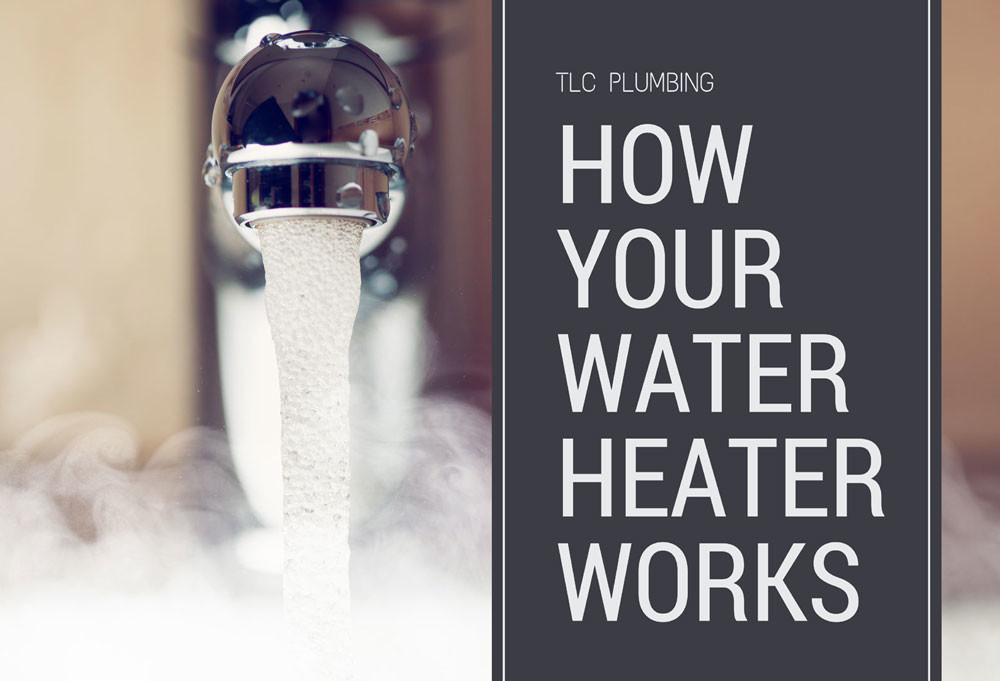Being a knowledgeable homeowner empowers you to make informed decisions about your home, so it’s important to know the basics about how your water heater works. Knowing even just a few key things about your water heater will help keep it running well and can help you know how to troubleshoot or when it’s time to call a plumber.
A Little Hot Water History
Let’s start out by acknowledging and being grateful for the fact that not only can we turn on a faucet and almost immediately have access to hot water, but that we also have instant access to clean water. It’s often a modern day luxury that we take for granted.
Before the hot water heater was invented, we depended on natural resources like fire, hot springs and natural gas to heat water for things like cooking and bathing. In 1889 Edwin Rudd invented the automatic storage water heater and is what we’re most familiar with today.
Fun Facts:
- The average life span of a storage tank water heater is 11 years (with proper maintenance)
- The average person uses about 64 gallons of water a day
- The average family will spend $400-$600 each year to heat their water
How Does a Hot Water Heater Work?
A Simple Breakdown
A typical water heater will use a storage tank (looks like a big metal cylinder that’s usually in a laundry room, utility closet or in a garage) and will either use gas or electricity to heat a certain amount of water at a time (depending on the size of your tank). Gas water heaters use a flame underneath the tank to create heat, while electric water heaters use a heating element to warm the water.
Each tank has inlets that enters and exits the tank to move the water to where you need it (i.e. shower, dishwasher, etc.). There’s also a thermostat to monitor the temperature and a pressure relief valve to help ensure the heating process doesn’t produce unsafe levels of water pressure.
- Water enters the tank from the main water supply.
- The heating burner/element at the bottom of the tank starts to heat the water.
- As the water heats, it will rise to the top of the tank.
- When you need hot water, it’s taken from the top of the tank where the hottest water is.
**For tankless water heater owners, the process is slightly different. Because there is no storage tank, there is a heating exchanger that is used to heat the water. It uses gas as the heat source, which allows the heat to transfer from the heat exchanger to the water. Unlike storage water heater tanks, you won’t run out of hot water and it’s a great option for homes that have several family members or for those homes that use a lot of hot water.
Inside Your Water Heater
TANK – The tank itself has a couple different layers that all serve different purposes. The inner shell is a heavy metal tank that has a protective glass liner that holds about 40-60 gallons of hot water. The exterior of the tank is covered in an insulating material and over that is an outer layer (which is just for outward appearance) and possibly an additional insulating blanket.
GAS VALVE OR BURNER ASSEMBLY (HEATING) – Gas water heaters use a flame underneath the tank to heat the water, while electric water heaters use a heating element.
THERMOSTAT – This serves as the temperature control device to determine how hot the water will get. You should be able to adjust the thermostat to meet your needs.
DIP TUBE – This is the tube where water enters into the tank to replenish the hot water being used. It’s located at the top of the tank and goes down to the bottom where the water is then heated.
SHUT-OFF VALVE – This valve will stop water from flowing into the water heater. It’s actually a separate component from the water heater and is located outside and above the unit.
HOT SUPPLY – This is located inside the tank at the top; this port allows the hot water to exit the tank and flow through your home’s pipes to whatever appliance you want hot water from.
DRAIN VALVE – This valve is not a part of your water heater’s daily use, but was created to easily empty the tank to replace the elements and remove sediment or to move the tank to a new location. This is located near the bottom of the tank on the outside.
PRESSURE RELIEF VALVE – This a safety device that keeps the water pressure inside the tank within safe limits.
SACRIFICIAL ANODE ROD – This rod is suspended in the water tank to help keep your tank from corroding. This acts similar to a magnet by attracting corrosive minerals in the water to the rod instead of eroding the tank. It’s usually made of magnesium or aluminum with a steel core. This should be replaced about every 3-5 years, depending on how hard your water is.
Heating the Water
The water heater’s thermostat controls the temperature of the water inside the tank. The recommended water temperature setting by most manufacturers is between 120 to 140 degrees Fahrenheit. 120-140 degrees is a great range because it’s hot enough for household use without the risk of scalding. If you have children in your home, you may want to keep it at a lower temperature.
Additionally, setting your water heater to a lower temperature also saves energy and you can even turn down the temperature before you go on vacation to save energy. Look at the bottom of the tank and you’ll find a dial or knob to adjust the temperature. For an electric water heater, you’ll have to pull a protective cover off to access the dial.
The dip tube brings in cold water from your home’s water lines to the inside base of the tank. The heating element turns on until the water heats to your set temperature. As the water heats, it rises to the top of the tank where the hot water supply (located at the top) will exit your water heater and flow to your faucet or whatever fixture you’re trying to get hot water from.
It’s important to mention a hot water heater’s recovery time. For every gallon you draw out, you’re putting cold water back into the tank that needs to get re-heated. So if all the water in your tank starts at 120 degrees, but you’re adding 50-degree water into the mix, the temperature will slowly go down as you’re consuming hot water. Unfortunately, with tank-style water heaters, they will never heat the water as fast as you can use it. The thermometer uses a differential where your heater won’t fire up as soon as the temperature drops below your set point, otherwise it would constantly be turning on. This helps conserve energy.
You can do things like install a low-flow showerhead or a recirculating pump, which reduce the amount of water you use and helps extend the amount of time you have hot water. Plus, it helps you save money on your gas bills!
***
So hot water heaters are pretty simple appliances and work great for 10-15 years if you take good care of them and properly maintain them. If you’re experiencing issues with your water heater, check out our five clues it’s time to replace your water heater.

